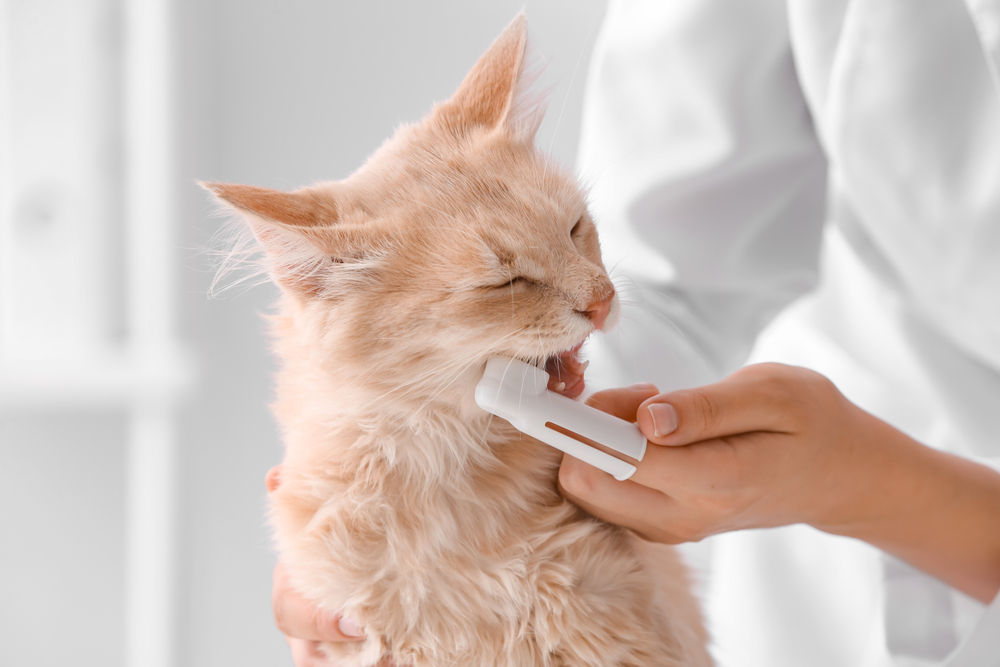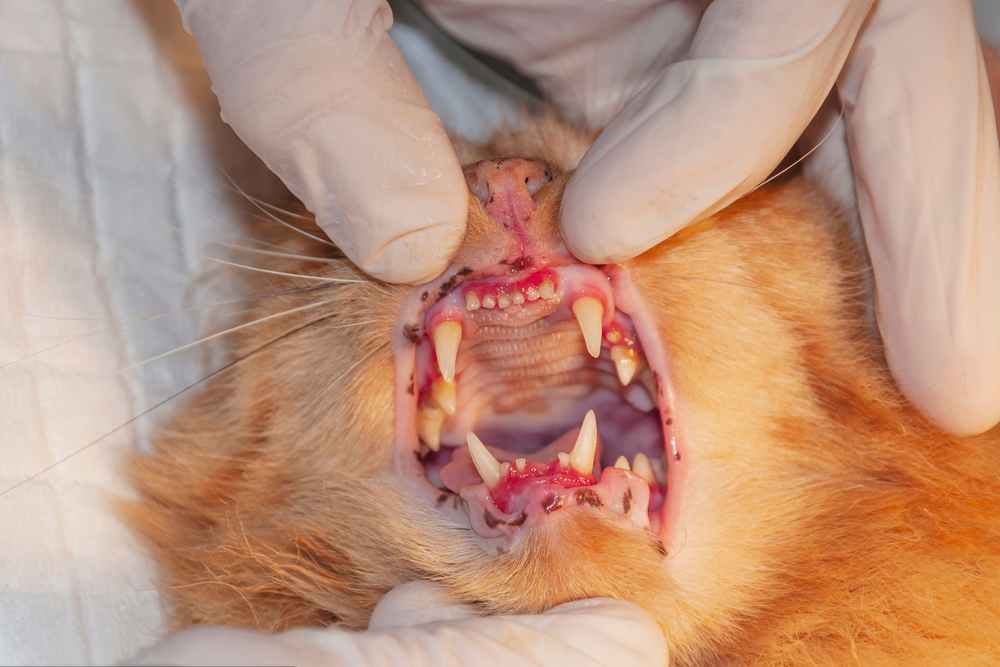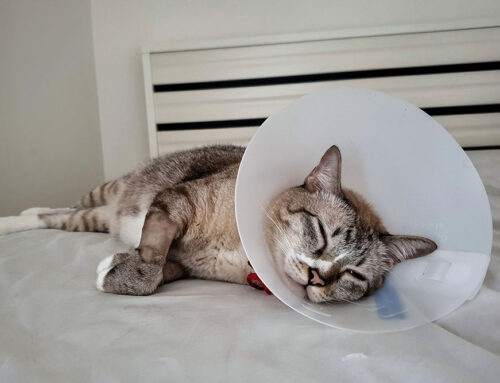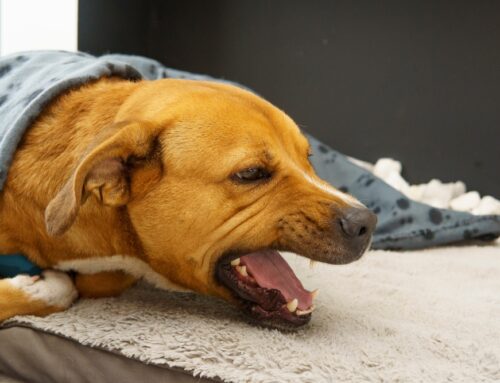Feline resorptive lesions (FRLs), also known as feline odontoclastic resorptive lesions (FORLs), are a prevalent dental condition affecting cats. These mouth lesions cause progressive tooth structure destruction, leading affected cats to experience pain and discomfort. Learning about FRLs’ causes and treatment options is essential for maintaining your cat’s dental health and overall well-being. Our Oliver Animal Hospital team explains FRLs, causes, and treatment.
Feline resorptive lesions: Causes
While FRLs’ exact causes are unknown, several factors may contribute to their development. The following factors may affect your whiskered pal’s FRLs risk:
- Genetics — Certain breeds, such as Siamese and Persian cats, are predisposed to developing FRLs, suggesting a genetic component to the condition. While inherited conditions are linked to breed, even if your cat is a Siamese or a Persian, they may not necessarily develop resorptive lesions.
- Diet — As the saying goes, you are what you eat. Likewise, nutrition is the foundation of your cat’s health, too. Your whiskered pal’s diet plays a role in their dental health, and if they lack appropriate chewing material or eat a diet high in carbohydrates, their FRLs risk may increase.
- Oral health — Poor oral hygiene, including inadequate dental care and plaque and tartar accumulation, can contribute to resorptive lesion development. Daily toothbrushing, annual dental exams, and professional cleanings are vital to maintaining your cat’s dental health, preventing periodontal disease, and decreasing their FRLs risk.
- Compromised immune system — Immune system disorders or dysregulation may predispose cats to FRLs, although more research is needed to understand this connection fully.
Feline resorptive lesion signs
Resorptive lesions can be challenging to detect early, as cats rarely show dental pain signs. However, as the lesions progress, affected cats may exhibit the following:
- Decreased appetite
- Difficulty eating or chewing
- Chewing on one side of the mouth
- Pawing at the mouth
- Increased salivation
- Reluctance to groom or unkempt coat
- Behavioral changes, such as aggression, hiding, or irritability
Regular dental exams are crucial for early FRLs detection and treatment. FRLs may only be apparent with a thorough exam performed by our Oliver Animal Hospital veterinarian.
Treating feline resorptive lesions

Because most FRLs have an underlying cause, our team’s priority is to address those conditions. Treatment often involves dental intervention to alleviate pain and resolve infection. Depending on the lesions’ severity and the dental disease’s extent, treatment options may include:
- Tooth extraction — In many cases, extracting the decayed tooth is the most effective way to alleviate your cat’s pain and prevent lesion progression. Cats typically adapt to losing a tooth, especially if the extraction mitigates dental disease progression and treats the lesion causing discomfort.
- Root canal therapy — If a lesion has not extensively damaged the tooth root, root canal therapy may be an option to preserve the affected tooth. This procedure involves removing the diseased tissue from the tooth and sealing it to prevent further infection.
- Professional dental cleaning — Professional dental cleaning under anesthesia may be necessary to remove plaque and tartar buildup, which can exacerbate FRLs and contribute to a cat’s dental disease.
- Pain management — Managing your cat’s pain is paramount to treating FRLs. Our veterinarian may prescribe pain medications or recommend dental-specific analgesics to alleviate discomfort during and after treatment.
- Home care — Maintaining your cat’s oral hygiene routine is crucial for managing resorptive lesions and preventing recurrence. This may include brushing your cat’s teeth regularly with a cat-safe toothpaste and toothbrush, providing dental treats, and scheduling regular veterinary dental exams.
FRLs are a common and painful dental condition affecting cats. While FRLs’ exact cause remains unclear, genetics, diet, oral hygiene, and immune system dysfunction are believed to play a role. Early detection and treatment are crucial to managing FRLs and preserving your feline companion’s dental health and optimal well-being. If your cat shows dental problem signs, contact our Oliver Animal Hospital veterinarian in South Austin.







Leave A Comment